Strait of Messina
Leaving the Aeolian Island Chain we sailed southeast to the Strait of Messina, the relatively narrow channel between the Italian boot and the Sicilian football.
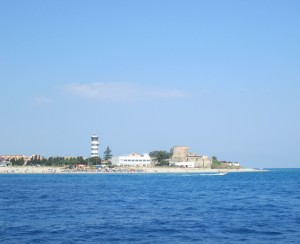 The eastern tip of Sicily
The eastern tip of Sicily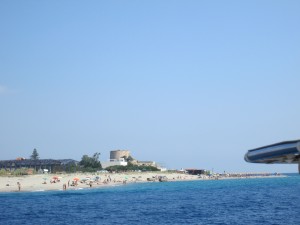
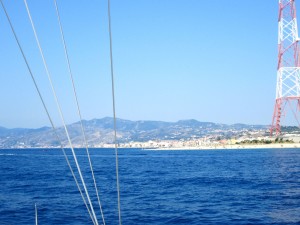
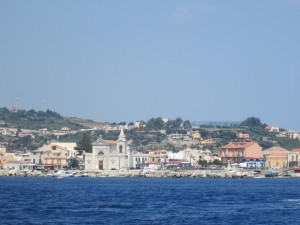
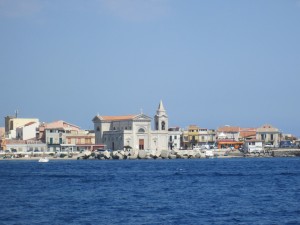
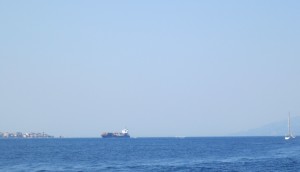 Tanker heading north above
Tanker heading north above
Below, heading south, the boot is to the left,
football to the right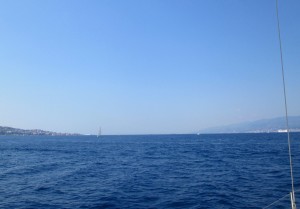
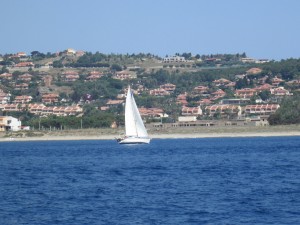 Look closely at the photos below.
Look closely at the photos below.
This is a sailfish fishing boat.
Note there is a spotter in the tower and
another on the long extension in front.
(Click on photos to enlarge)
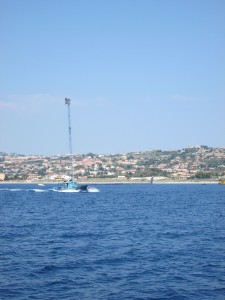
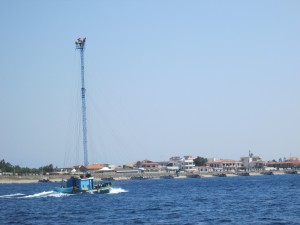
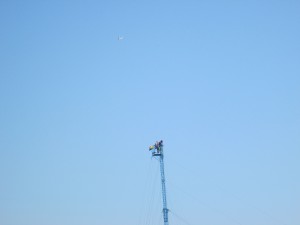
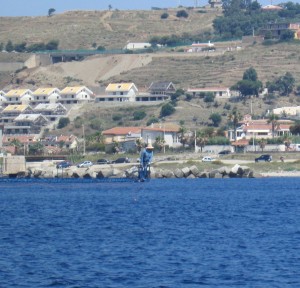
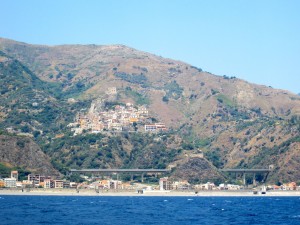
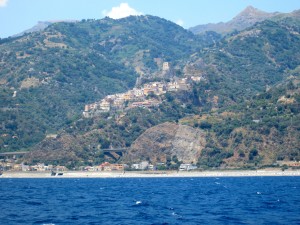
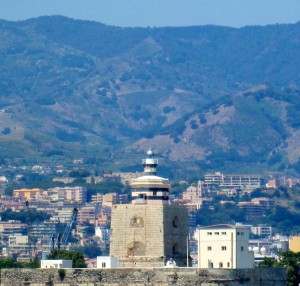
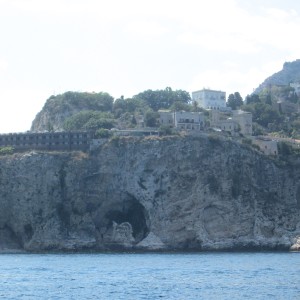
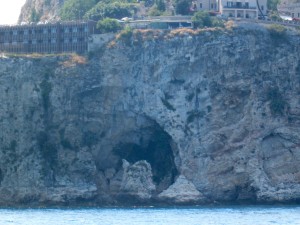
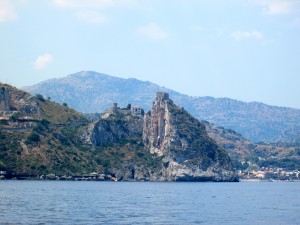
Taormina
Several hours cruising south of the Strait of Messina, Taormina was another one of our favorite locations, along with Procida (near Naples) and Malta (discussed in the next post). It is somewhat smaller than Syracuse but cleaner and generally more picturesque. When you anchor here, there is a small, fairly dreary area along the beach but the town itself is up some impossible switchback roads to a hill top area that is only outdone by progressively higher areas with various ancient fortifications.
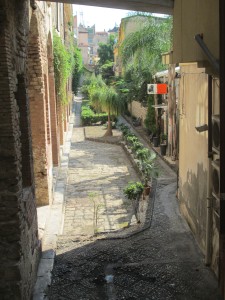 Above courtyard dates back to
Above courtyard dates back to
Greek settlements – a lovely site
encountered soon after our arrival.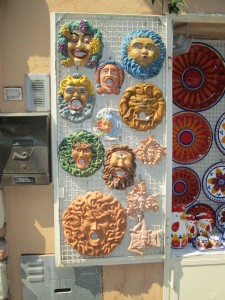 Lots of tourist shops.
Lots of tourist shops.
We liked Greg’s sun-face
better than these
The Giardini della Villa Comunale isn’t the sort of park you’d expect in Sicily, since it’s something of an English garden, but it was the creation of a Scottish woman who lived in Taormina in the late 1800s. Lady Florence Trevelyan was asked to leave England in the 1880s after having a fairly public affair with the future King Edward VII. She eventually married in Taormina and began work on her gardens.
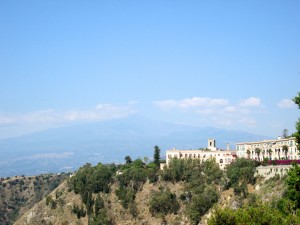 Views from the Garden
Views from the Garden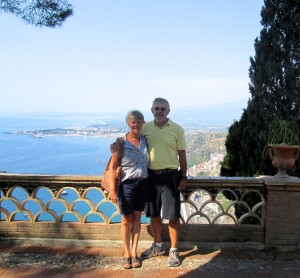
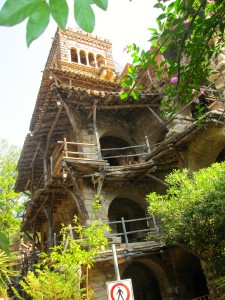 Various odd structures where
Various odd structures where
Lady Florence hosted tea parties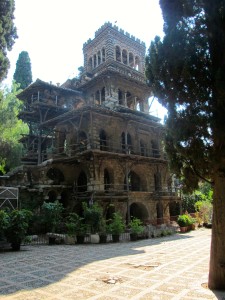
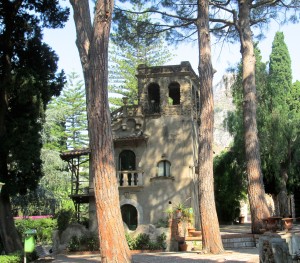
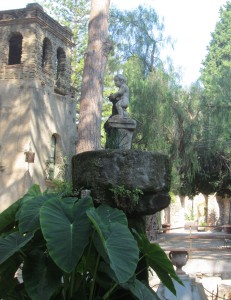
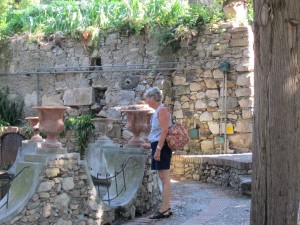 And truly unexpected in an English Garden
And truly unexpected in an English Garden
is this bit of WW2 Italian naval history.
Ride that torpedo!
(Click to enlarge to read & see pictures)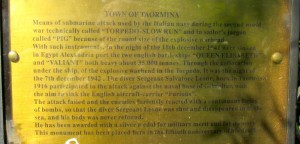

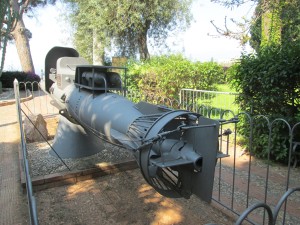
The amphitheater at Taormina is the
second largest of Greek origin in the world
but we found it more impressive, if not
larger, than the one in Syracuse.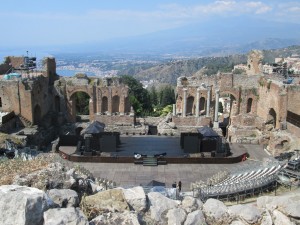 The structures (including Roman
The structures (including Roman
improvements) and the views from any
angle were just fabulous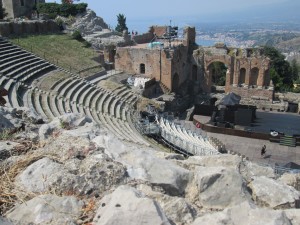
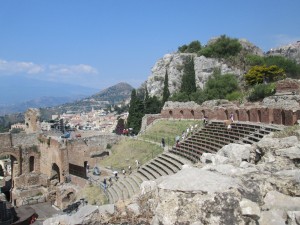
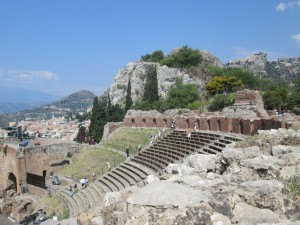
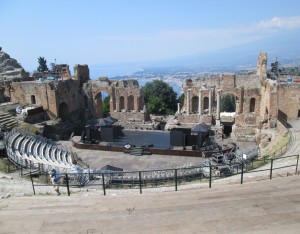
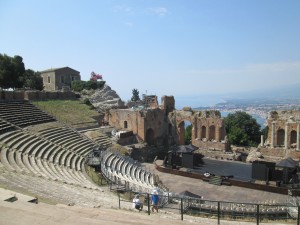
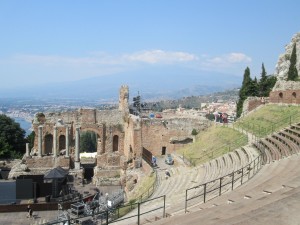
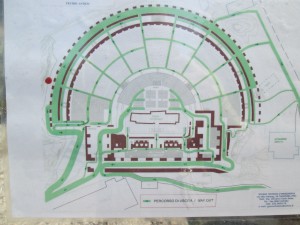 Diagram above, early 20th century photo below
Diagram above, early 20th century photo below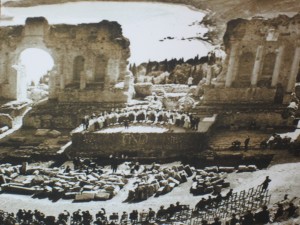
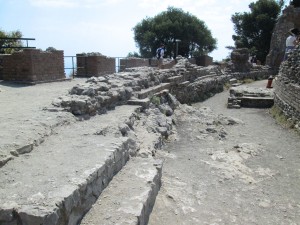
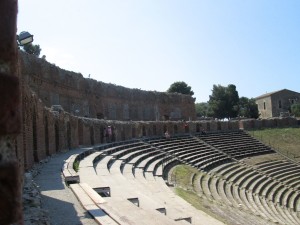
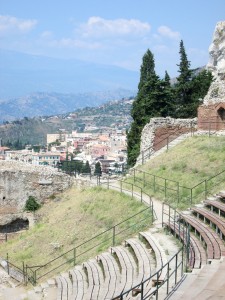
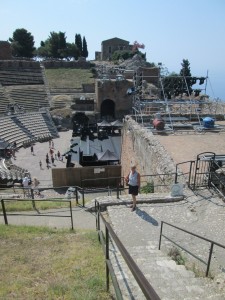
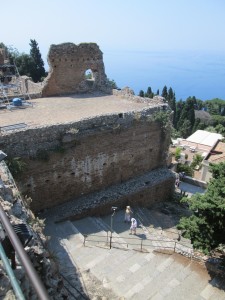
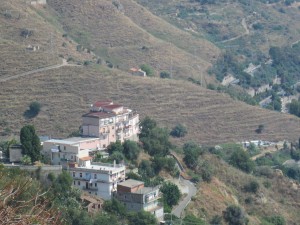
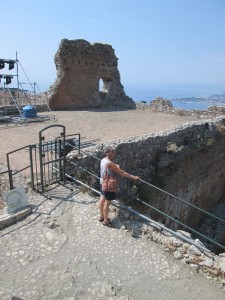
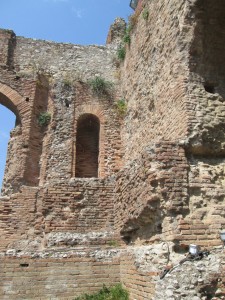
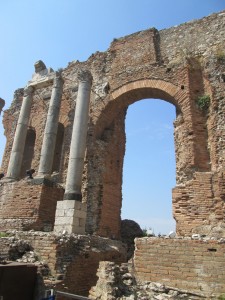
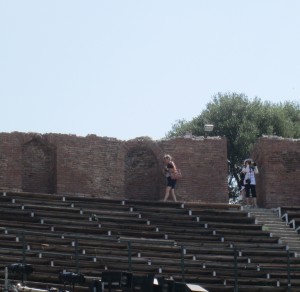
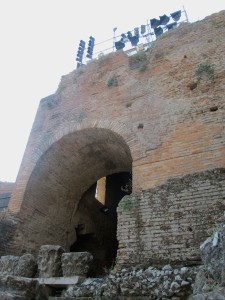 Backstage
Backstage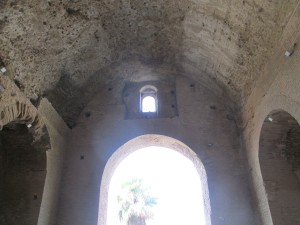
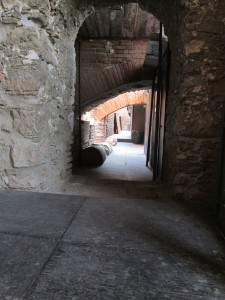
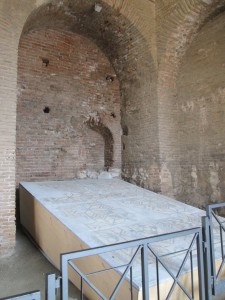
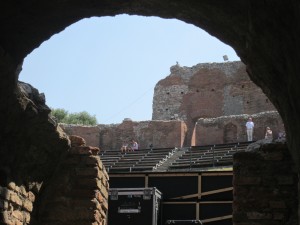
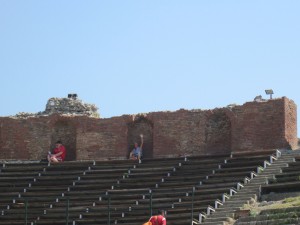
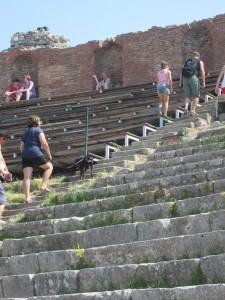
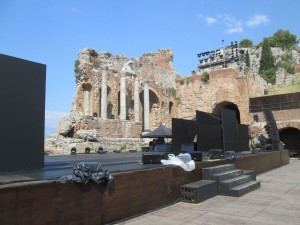
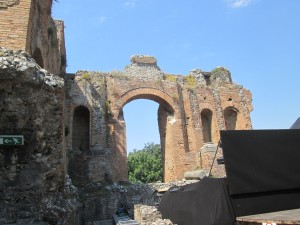
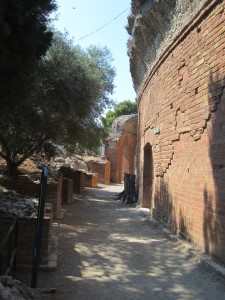
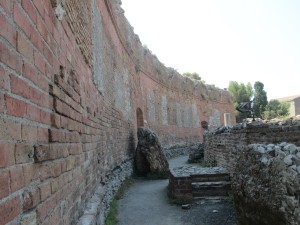
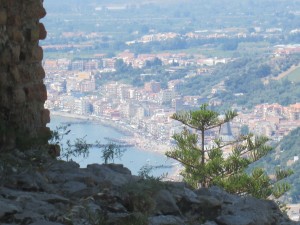 Below is Andy (our skipper) with his
Below is Andy (our skipper) with his
family, just arriving at the amphitheater
as we were about to leave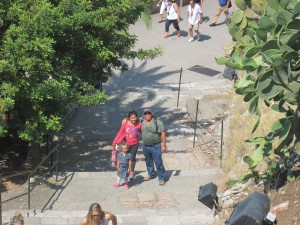
Waiting for the bus to the higher fortifications
it was time for a little carb cheating: pistachio gelato
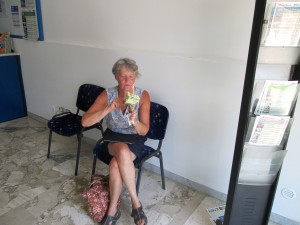 (Janet did not consume this without help)
(Janet did not consume this without help)
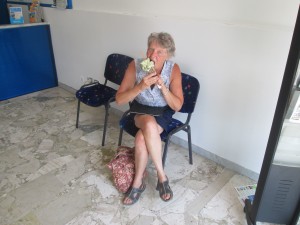 Then from the main town, already
Then from the main town, already
up a steep ride from the bay, up we went
further to see ancient fortifications.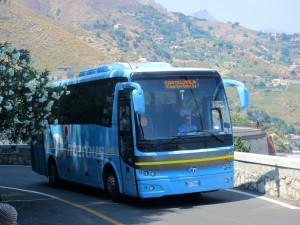
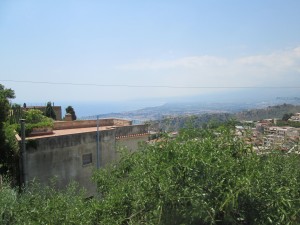
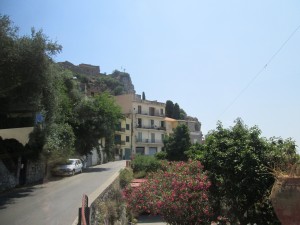
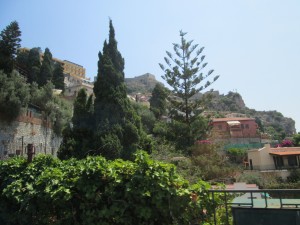
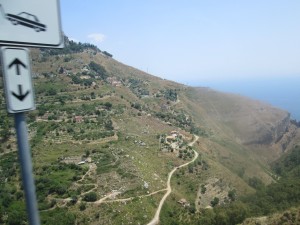
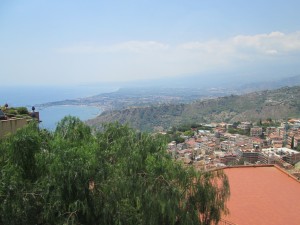
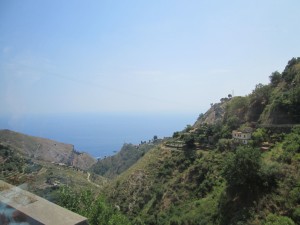
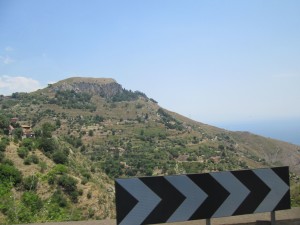
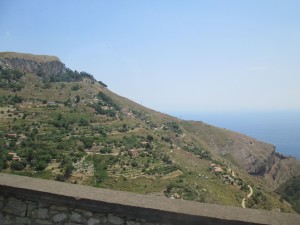
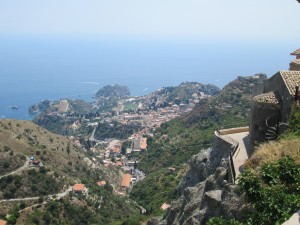
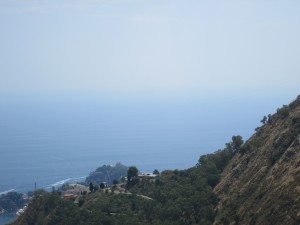
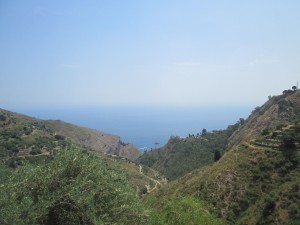
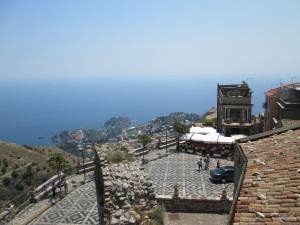
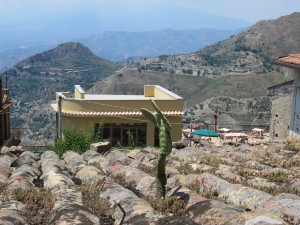
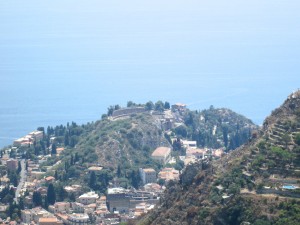
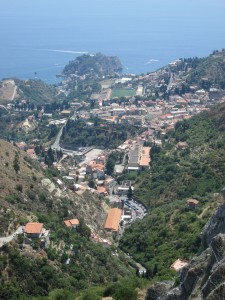
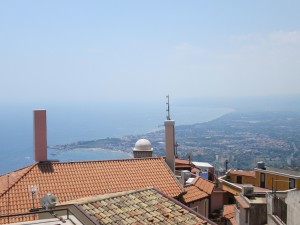
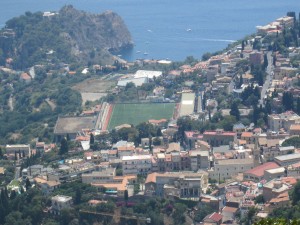
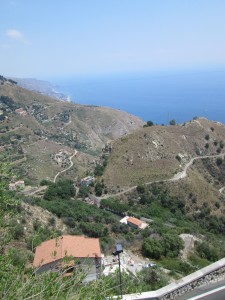
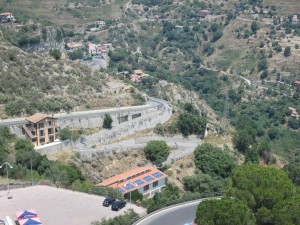
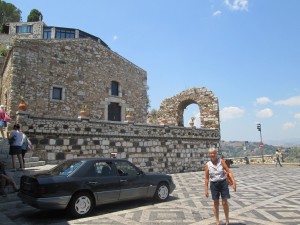 There is a little tourist town at the top
There is a little tourist town at the top
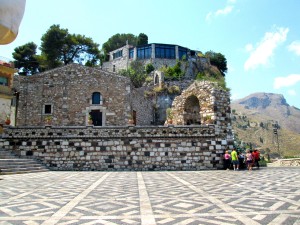
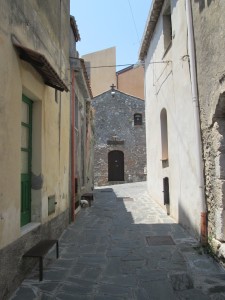
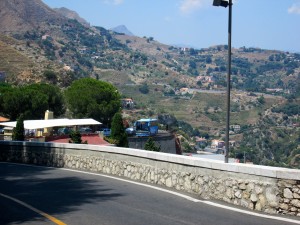 On the old fortifications and
On the old fortifications and
views from this area…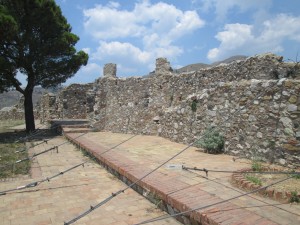
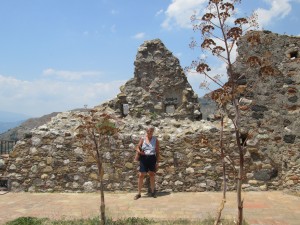
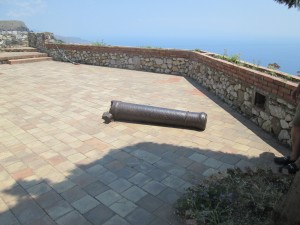
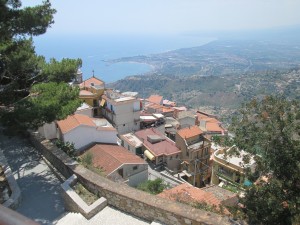
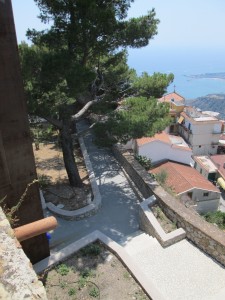
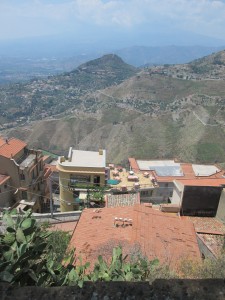
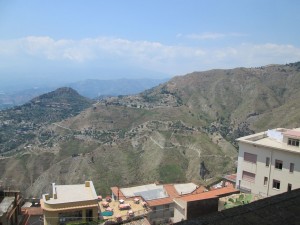
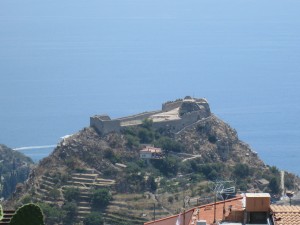
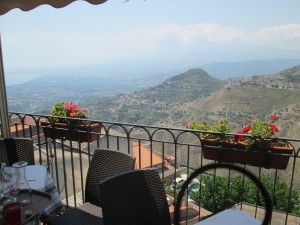 Just below the fort, lunch!
Just below the fort, lunch!
Syracuse
From Taormina it was a short cruise down to Syracuse, a larger city with a similar history extending back to when it was an important center of Greek culture.
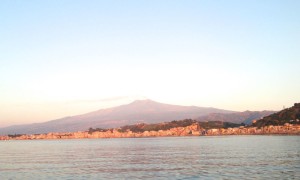
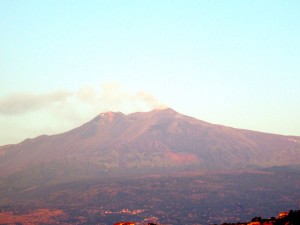 Cruising south from Taormina we had
Cruising south from Taormina we had
good looks at a smoldering Mount Etna
and exactly one half of the Italian
Navy’s aircraft carrier force.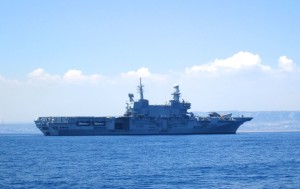
The main historic area in Syracuse is on the
island of Ortigia, barely qualifying as an island
with a couple very short bridges connecting it to
the rest of the town. Once on Ortigia, one quickly
encounters the Temple Apollo. Of course what we
remember is that it had a great little sidewalk cafe
next to it with friendly service and one of the
better functioning wifi systems we encountered.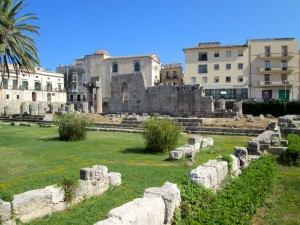
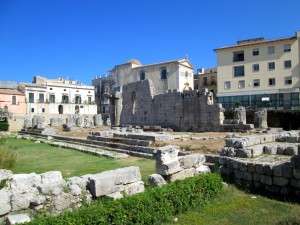
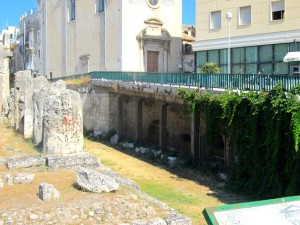
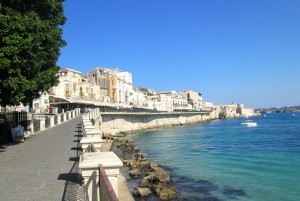 Along the inner harbor
Along the inner harbor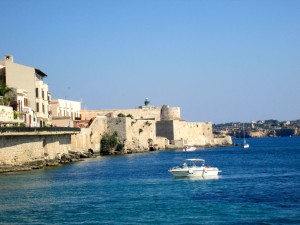
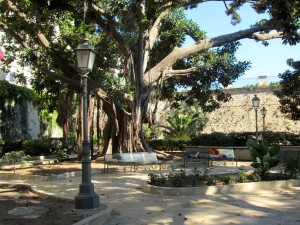
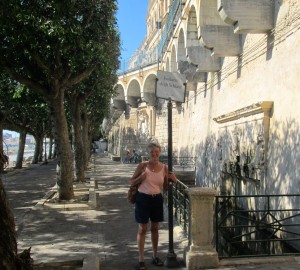
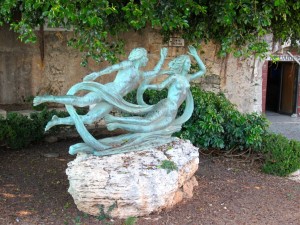 At the aquarium. Nice touch.
At the aquarium. Nice touch.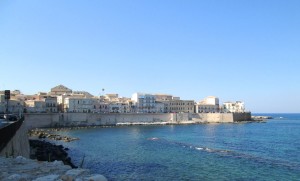
Outside the harbor (east side of the island)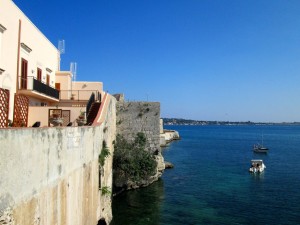
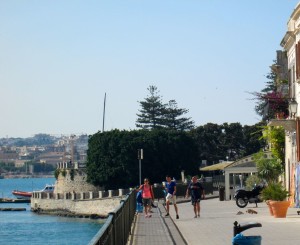
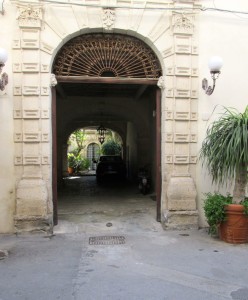
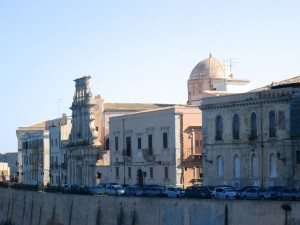
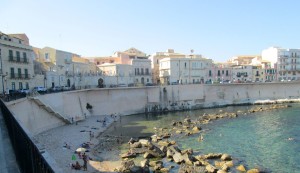
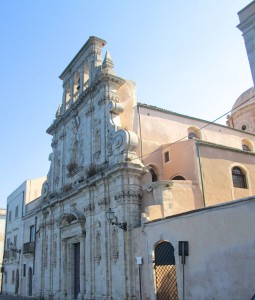
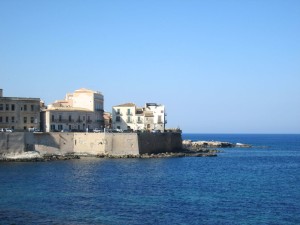
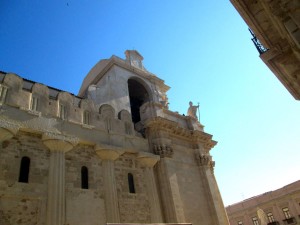 The Duomo (Cathedral) was built in the 7th
The Duomo (Cathedral) was built in the 7th
century over the Greek Temple of Athena (5th
century BC). The Arabs arrived in the 9th
century, converting it into a mosque. Structures
from the original temple are still evident, inside
and out.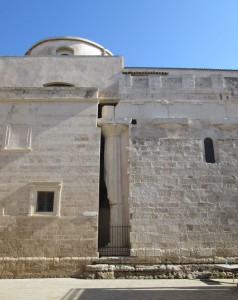
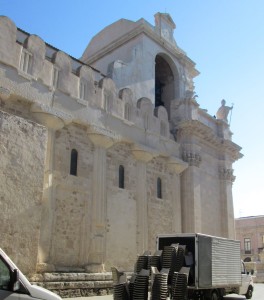
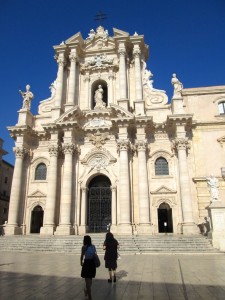
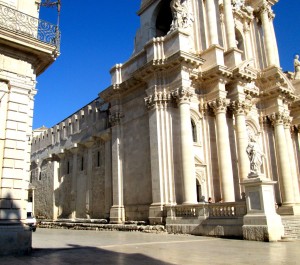
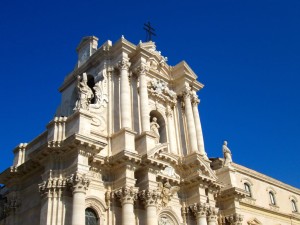
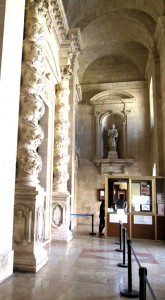 Vestibule
Vestibule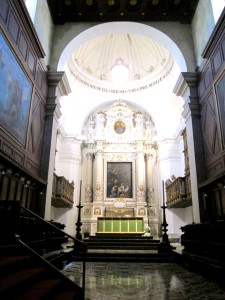
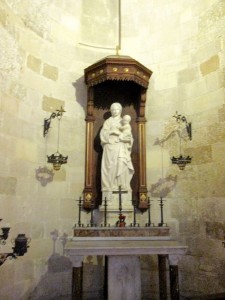
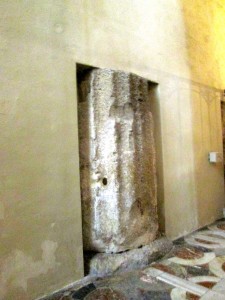 Above, below, original Greek columns
Above, below, original Greek columns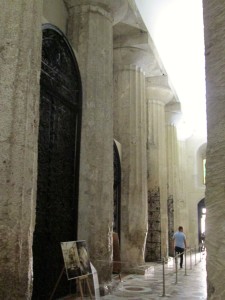
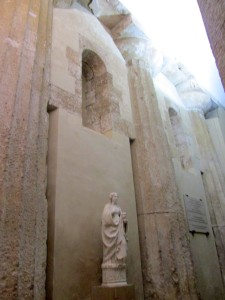
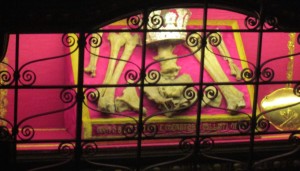
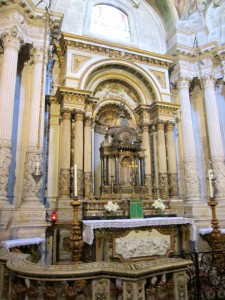
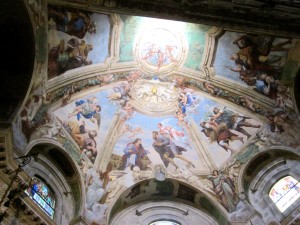
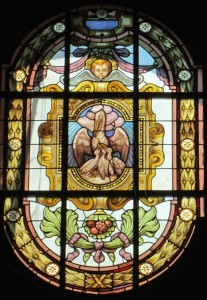
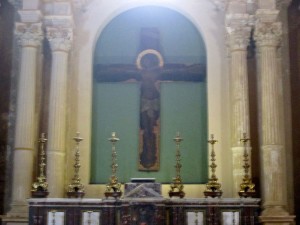
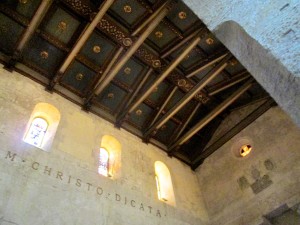
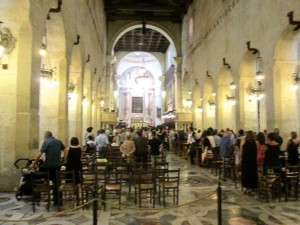
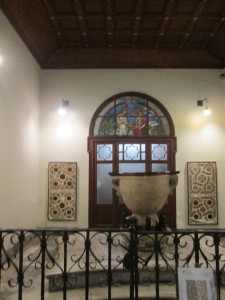 The baptismal fount is also of
The baptismal fount is also of
ancient Greek origins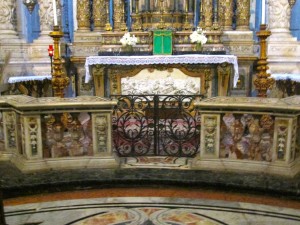
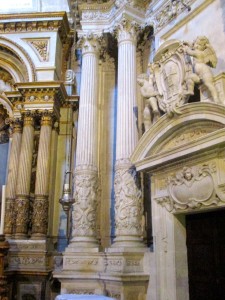
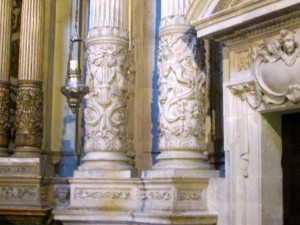
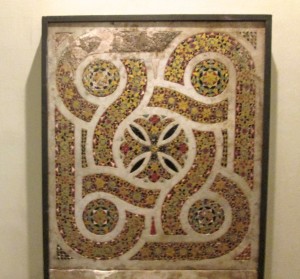
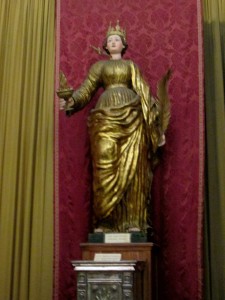 Saint Lucy, the city’s patron, has
Saint Lucy, the city’s patron, has
a considerable showing here.
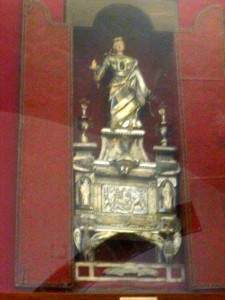 More touring around Ortigia…
More touring around Ortigia…
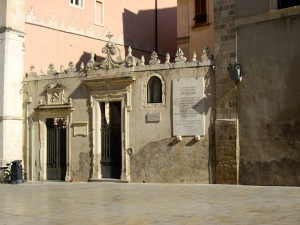
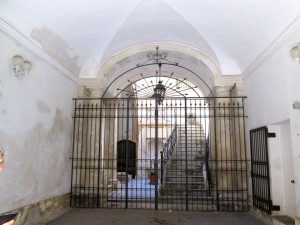
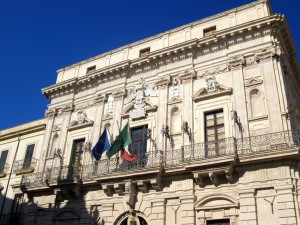 On the second day we eventually left the
On the second day we eventually left the
island of Ortigia and headed north on a
long, hot trek to find the amphitheater. As
mentioned, we were more impressed with
the somewhat smaller one in Taormina but
this one was big! 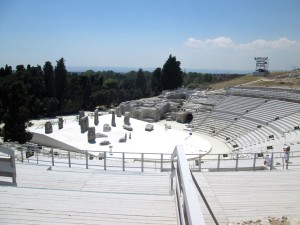 Despite the efforts of Archimedes, after an
Despite the efforts of Archimedes, after an
extended siege Syracuse fell to the Romans
in 212 BC and the Greek amphitheater got
another redesign. The caves below were
carved out just above the back of the
amphitheater. We assumed that these were
the corporate boxes of the day.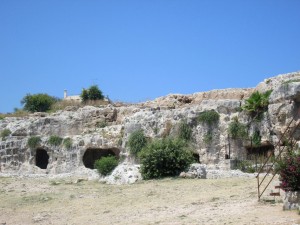
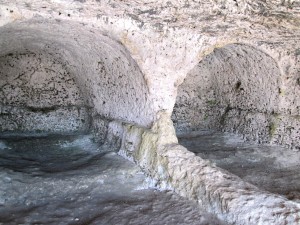 Back around and down the hill were old
Back around and down the hill were old
quarries. It wasn’t clear to us but the cave
below appeared to be natural and had
some very interesting acoustics.
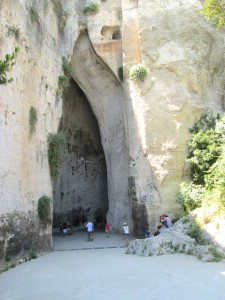 And this one had some cool shade and
And this one had some cool shade and
a bench for a hot but smiling gal.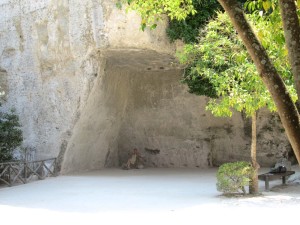
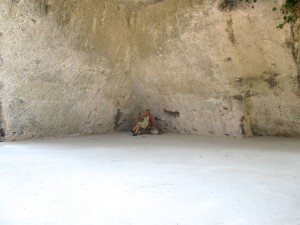
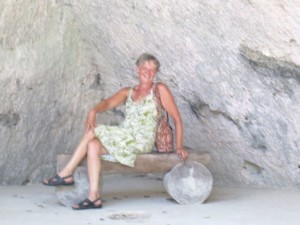
The next morning we headed out of
the Syracuse harbor but had some great
looks as we went.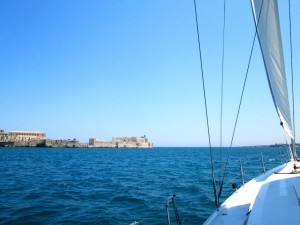
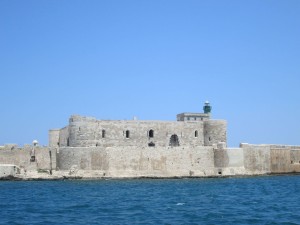
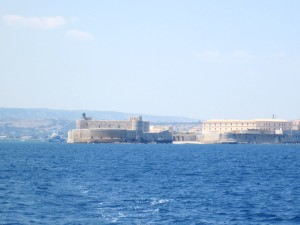
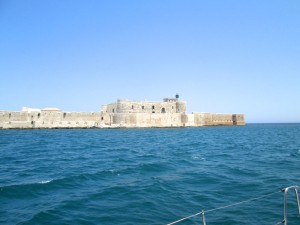 With good conditions, we set sail and headed
With good conditions, we set sail and headed
south for an overnight sail to the Island of Malta
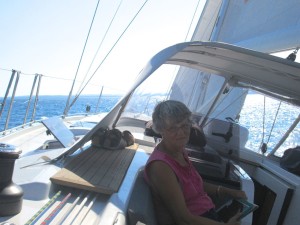
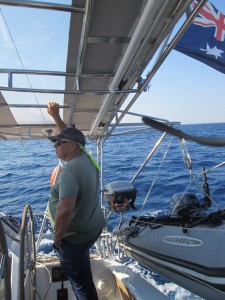
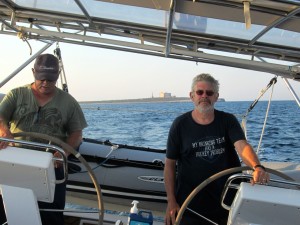
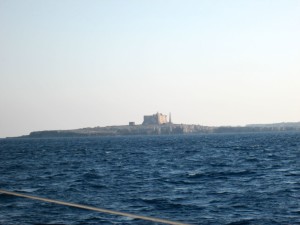 …and watched the southeastern tip of
…and watched the southeastern tip of
Sicily fall behind us.